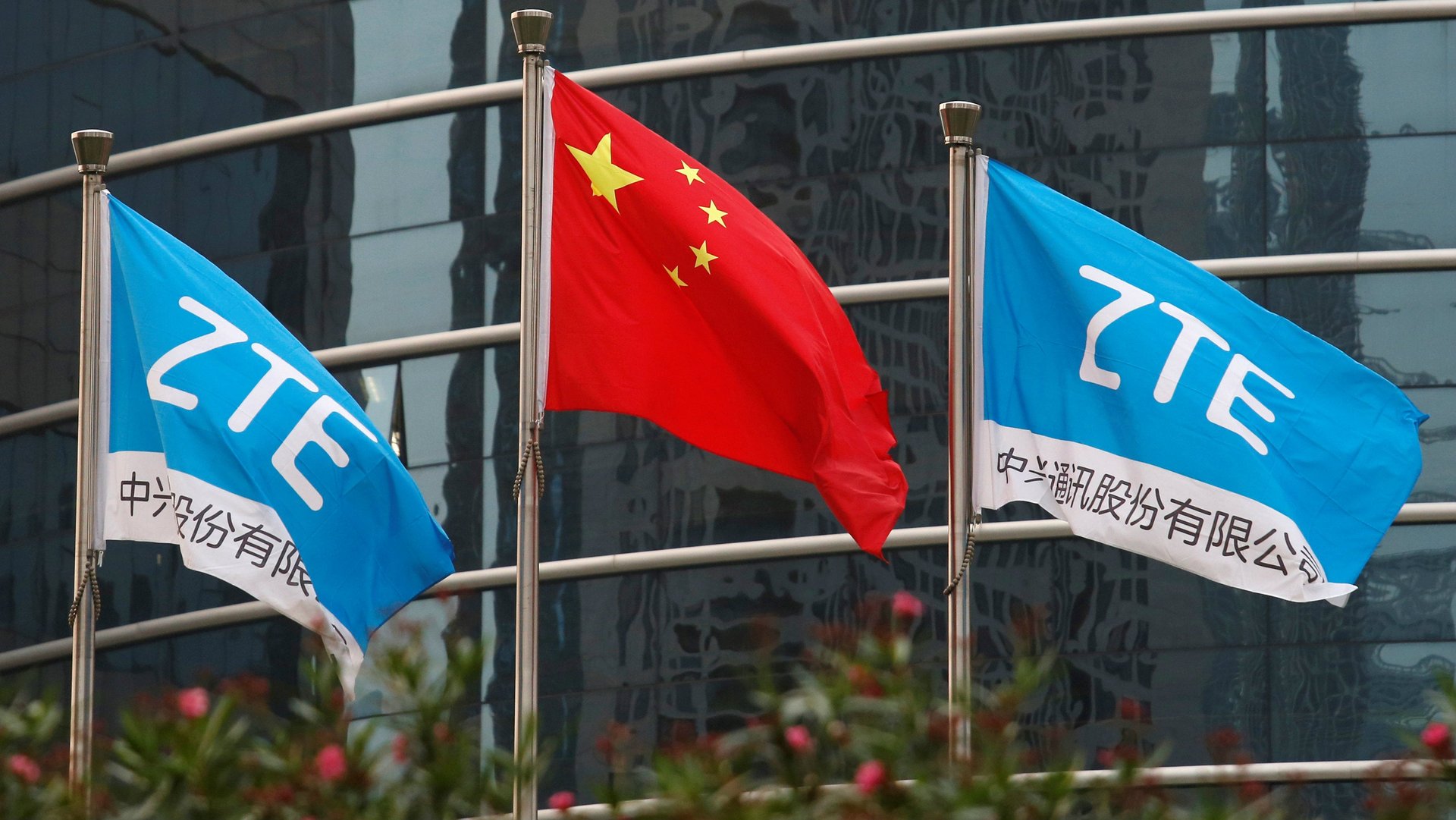China wants to wean itself off foreign technology. Now it will see how hard that will be
Even before Donald Trump got into the White House and raised the prospect of a trade war with China, Beijing was aiming to reduce its reliance on foreign technology.


Even before Donald Trump got into the White House and raised the prospect of a trade war with China, Beijing was aiming to reduce its reliance on foreign technology.
In 2014, the government urged the military, banks, and state-owned enterprises to switch to domestic suppliers for any tech products or services they used. A year later, it announced plans for Chinese industry to raise the domestic content of core components and materials to 40% by 2020, and to 70% by 2025.
It’s unclear whether Chinese suppliers can really match what their foreign counterparts offer. But they’ll soon be put to the test, now that the US has taken punitive measures towards a major Chinese smartphone maker.
On April 16, the US Department of Commerce issued an order (pdf) barring US companies from selling hardware or software to ZTE, a Chinese phone maker. It’s accused of failing to uphold an agreement it struck last year when it pleaded guilty to violating US sanctions against Iran and North Korea. (ZTE says it’s “communicating with relevant parties proactively in order to respond accordingly.”)
Analysts say that the Commerce Department’s measures will devastate ZTE in the short term. After the order was announced, Jefferies put out a research note declaring: “All hell breaks loose.”
Since the order is effective immediately, ZTE must now scramble to revamp its entire product line and supply chain and plan to make phones without US parts. According to Tarun Pathak of Counterpoint Research, this will inevitably lead to delays and lost sales. “Their product planning has already been done,” he says. Re-fitting upcoming products to make way for new vendors “will take a lot of time, and in this competitive market, any time lost will lead to your market share going to your rivals.”
ZTE, based in Shenzhen, is publicly traded but its majority shareholder is a state-owned enterprise. Unlike most other Chinese smartphone brands—and unlike its rival Huawei, which has effectively been barred from doing any major business in the US—ZTE sells the vast majority of its handsets in the US, rather than China or India. In a country dominated by Apple and Samsung, it has a 10% market share, according to Counterpoint Research. That’s in part thanks to its relationships with carriers that sell ZTE’s phones with their own brand names stamped on them—something other smartphone brands are reluctant to do.
While some of the US-made components in ZTE’s phones are easily replaceable with overseas counterparts, others are not. Painfully, ZTE will no longer be able to look to Qualcomm, the California-based chipmaker, for its SoCs (system-on-a-chip), which serve as the heart of the smartphone. According to analysts, all ZTE phones sold in the United States come powered with a Qualcomm chip, as do more than 50% of its phones sold outside the US.
Wayne Lam, principal analyst at IHS research, says that because ZTE’s phones in the US are compatible with domestic LTE standards, its radio-frequency (RF) components almost certainly come from Broadcom, Qorvo, or Skyworks—which are also US companies (or in the case of Broadcom, “US-domiciled”).
To replace Qualcomm, ZTE could turn to MediaTek, a Taiwnaese rival. But ideally it would turn to a mainland-Chinese counterpart. The government is barreling toward making local chipmakers competitive with overseas rivals. China IC Fund, which leads financing for semiconductor firms under state guidance, is reportedly aiming to raise 200 billion yuan (about $32 billion) to invest in processor design and manufacturing.
But switching over to Chinese component suppliers isn’t so simple. In chips, Counterpoint’s Pathak says, the only Chinese vendor that currently comes close to Qualcomm or MediaTek is Spreadtrum, which is a division of China’s state-affiliated Tsinghua Unigroup. But Spreadtrum specializes in making chips for $100 “entry-level” phones, rather than the $250 to $300 models ZTE sells in the US.
Meanwhile, Lam adds, China’s RF component suppliers aren’t capable of meeting US LTE standards. As a result, ZTE will likely be relegated to selling very basic 3G models.
And that only covers the hardware problem for ZTE. Since the US also has restricted American software suppliers from selling to the company, it’s possible that Google won’t be able to supply ZTE with Android software. (Google did not immediately reply to Quartz’s request for comment.)
With so much money heading toward it, it’s possible that China’s semiconductor industry soon will catch up to that of the US. For now though, losing access to US components looks set to turn ZTE’s phones into bricks.